TURKEY: TOURIST INTERESTS
The essentials on the destination Turkey to prepare your trip: More information in the description below.
- Category: USEFUL INFORMATIONS TURKEY
- Service Length: 45 Minutes
- Price:Free
Description
The centers of interest of the destination
CULTURAL Interest: An exceptional cultural heritage
It is a paradox. Turkey suffers from a lack of image of a destination too often synonymous with cheap sunshine, while its cultural assets are infinite. Without even counting Istanbul, which in itself is a destination in itself, the country has an invaluable archaeological and cultural heritage and ancient sites are almost more numerous than in Greece.
• Istanbul: a city - world
What fate! Founded by Greeks, Byzantium was chosen by Emperor Constantine to become the New Rome. Renamed Constantinople at his death, the largest city in the Middle Ages, seat of the sublime Porte from the 15th century, it is a megalopolis of more than 2000 years! Thus in turn Roman, Byzantine, Christian, Muslim and secular, Istanbul is a city of extraordinary architectural richness where palaces and cultural buildings have no equivalent. Capital of the two important empires, Istanbul nowadays has many architectural monuments spread across the city, which reflect the magnificence of the past. The part between the Sea of Marmara and the Golden Horn, is also known as the "peninsula of history" because it contains many buildings belonging to Roman, Byzantine and Ottoman architecture. The city condenses an impressive number of cultural treasures and curiosities per square meter. The villa has so much wealth that it would be difficult to discover everything in a week. And we never tire of coming back to it. We choose Istanbul for its history, its myths and its atmosphere.
• Unmissable archaeological sites
The ancient sites are so numerous that it is impossible to name them all let alone visit them. There are however some more mythical than others. This is the case of Ephesus 20 km from Kuşadasi. It can be said that it is the best preserved ancient city in Turkey. When we know that Ephesus was the third port in the ancient world after Rome and Alexandria, we imagine the importance of its architectural riches. The beautiful Ephesus is undoubtedly the star of the ancient cities of Turkey. Its dimensions, the variety of its remains, the state of conservation or the quality of the restoration of its monuments largely justify this enthusiasm. Pergamon 93 kilometers north of Izmir is another of these ancient gems. The entire lower part of the city is dedicated to the healing god Asclepius. As for the upper acropolis, located 6 km away, it is perched 280 meters high on a large rocky outcrop. Aphrodisias, 150 km from Bodrum on the road to Pamukkale, is a city of white marble with bluish reflections located in the heart of a bucolic landscape. What could be more romantic for the city of Aphrodite, the goddess of beauty? The theater, the stadium, the odeon and the Tetrapylon (monumental gate) are particularly well preserved. Also in the region, about fifty kilometers from Kusadasi, the theater of Miletus and the temple of Didyma are two jewels of ancient art that deserve a visit.
On the road towards Söke, Priène is a site of astonishing urban modernity, installed on the foothills of Dilek Dagi. On the side of the Mediterranean Sea, the sites are less known but just as prestigious. The Termessos site is one of those. 34 kilometers north of Antalya, the ancient Lycian city is drowned in a thick maquis of pines, olive trees and fragrant bushes which give it a lot of charm. The visit is more difficult for seniors because the relief is very rugged. A physical effort which is largely rewarded during the discovery of the theater and the rupestrian necropolises. 20 kilometers from Antalya, Perge is a very beautiful Roman city in Asia Minor that you must discover early in the morning to avoid suffering from the heat. Finally, the ruins of Aspendos, just next door, are worth seeing especially in spring when they emerge from the wheat fields with the foothills of the Taurus as a perspective.
The richness of the architectural heritage is far from being limited to archaeological sites. The country has thousands of churches and hundreds of villages with preserved architecture. In the only golden triangle formed by Urgup, Uçhisar and Avanos in the Cappadocia region, more than 365 churches have been counted and no less than 200 others remain to be discovered!
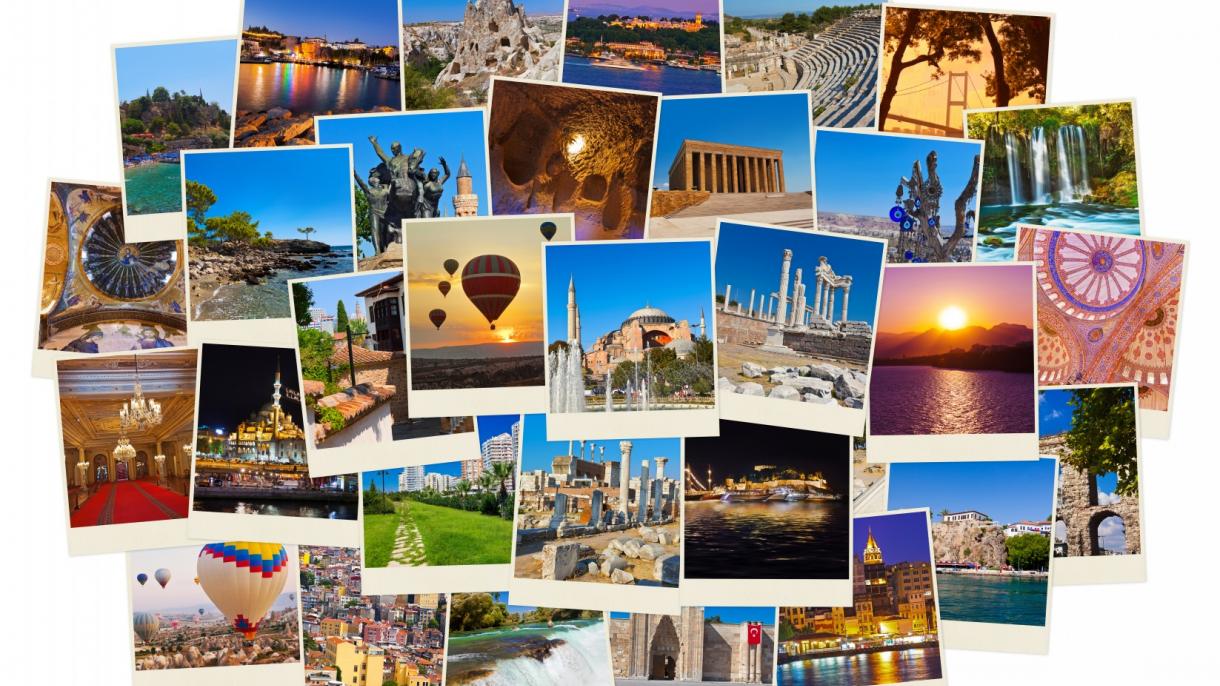
• A renowned gastronomy
In general, Turkish cuisine is considered one of the top three cuisines in the world for its diversity, for its abundant use of natural ingredients, and for its flavors that can appeal to any palate. Turkish cuisine is at the crossroads of various influences, European, Asian, African and Middle Eastern. Turkish cuisine, which has its roots in Central Asia, where the Turks were originally settled, evolved with the arrival of the latter in Anatolia. This Central Asian cuisine has been mixed with influences from the regions with which the Turks have started to maintain close cultural ties, Anatolia of course, but also the Mediterranean basin and Europe. This is how Turkish cuisine, which enriches the taste and flavors of its ingredients with its original character, is seen by many as a bridge between Mediterranean cuisine and Oriental cuisine.
• Legendary hospitality
Tourists who visit Turkey are often astonished at the reception they receive from Turks who do not hesitate to turn away from their activities to help them or to simply share a moment of conversation. Hospitality is a cornerstone of Turkish culture, and Turks consider visitors to be welcomed as guests sent by God. This concept of hospitality is still valid today and it does not appear that it will disappear with mass tourism. It can be said that a large part of Turks are very happy to get to know foreigners, to learn elements of different cultures and to be able to experience their knowledge of foreign languages.
ENVIRONMENTAL interest
• An astonishing geographical diversity reflecting the size of the country
Anatolia is a plateau surrounded partially by mountain ranges on the north, west and south, and in the east its relief is outlined by a rough mountainous region with an average altitude of 1050 meters. In the west, the mountains meet the sea. The mountain ranges in northern Anatolia and the Taurus extend in an arc and become denser in eastern Turkey. Mount Ararat (5,156 m) on which Noah's ark is said to have grounded after the flood, is the highest point in Turkey. With its numerous reliefs and its shaped structure, Turkey has the appearance of a plausible mosaic: its parallel mountain ranges, its extinct volcanoes, its plateaus broken by its plains and valleys. Furthermore, the climate varies considerably from one region to another: while a temperate climate is encountered in the Black Sea region, the southern and Aegean coastlines are marked by the Mediterranean climate; the continental climate which dominates the central plateau gives way in eastern Turkey to a harsh mountain climate. It is indeed thanks to this climatic variation that Turkey has some of the richest flora and fauna in Europe and the Middle East.
• A rich and varied fauna and flora
There are nearly 10,000 species of plants in Turkey, 20% of which only grow in this country. The abundant rainfall in the Black Sea region promotes the growth of rich vegetation. As for the Dardanelles Strait, being the intersection of the Aegean and Black Sea regions, it is home to a variety of vegetation that is found in the Mediterranean climate as well as in the temperate climate. Thrace has dense forests thanks to its continental climate coming from the Balkans. The Aegean and Mediterranean coasts, from the Strait of the Dardanelles to the Gulf of Iskenderun, offer a typically Mediterranean vegetation which extends from the plains to the western ridges rising to 1000 meters of altitude. As the summer is hot and dry on the southern coastline, the vegetation of this region presents a subtropical aspect and gives rise to the cultivation of bananas and palms. Pine and cedar forests are found in the Taurus, sometimes with juniper trees in the heights. Landlocked by mountains, Central and Eastern Anatolia are far from the influence of the temperate climate. Rare are the showers in this region and the summers are hot and dry, the winters harsh. Some regions are characterized by steppes; however, there are forests of pine, oak and beech. The whole area around Lac Tuz is almost infertile.
With over 114 species of mammals, Turkey is home to a wide variety of wild animals. The forests located in the northern region are a real habitat for brown bears and wild goats. Sea turtles and seals live in the waters of the Aegean and Mediterranean seas. Wild Asian mules, lions and tigers, as in other parts of the world, are also endangered species here. We also meet in Turkey on average 400 species of resident or migratory birds, some of which have completely disappeared in Europe, such as the black vulture. Turkey is an important stopover for bird migration between Africa, Asia and Europe.
• Cappadocia: The must-see region
The richness of this region is immense and the circuits are endless. Cappadocia is a wonderful natural park for hiking or horseback riding (the name Cappadocia meaning "the land of beautiful horses"). Each valley is a pretext for discovering these curious "fairy chimneys" with pointed hats topped with a small basalt plateau. A true mirage of stone in the heart of Anatolia, Cappadocia is the epicenter of this volcanic land. On foot, on horseback or in a balloon, it is an essential and particularly authentic place. Cappadocia has kept its rural soul, the women still knot the rugs, the potters have never stopped their activities as for the peasants, they continue to cultivate the tiny fields adjoining their troglodyte house.
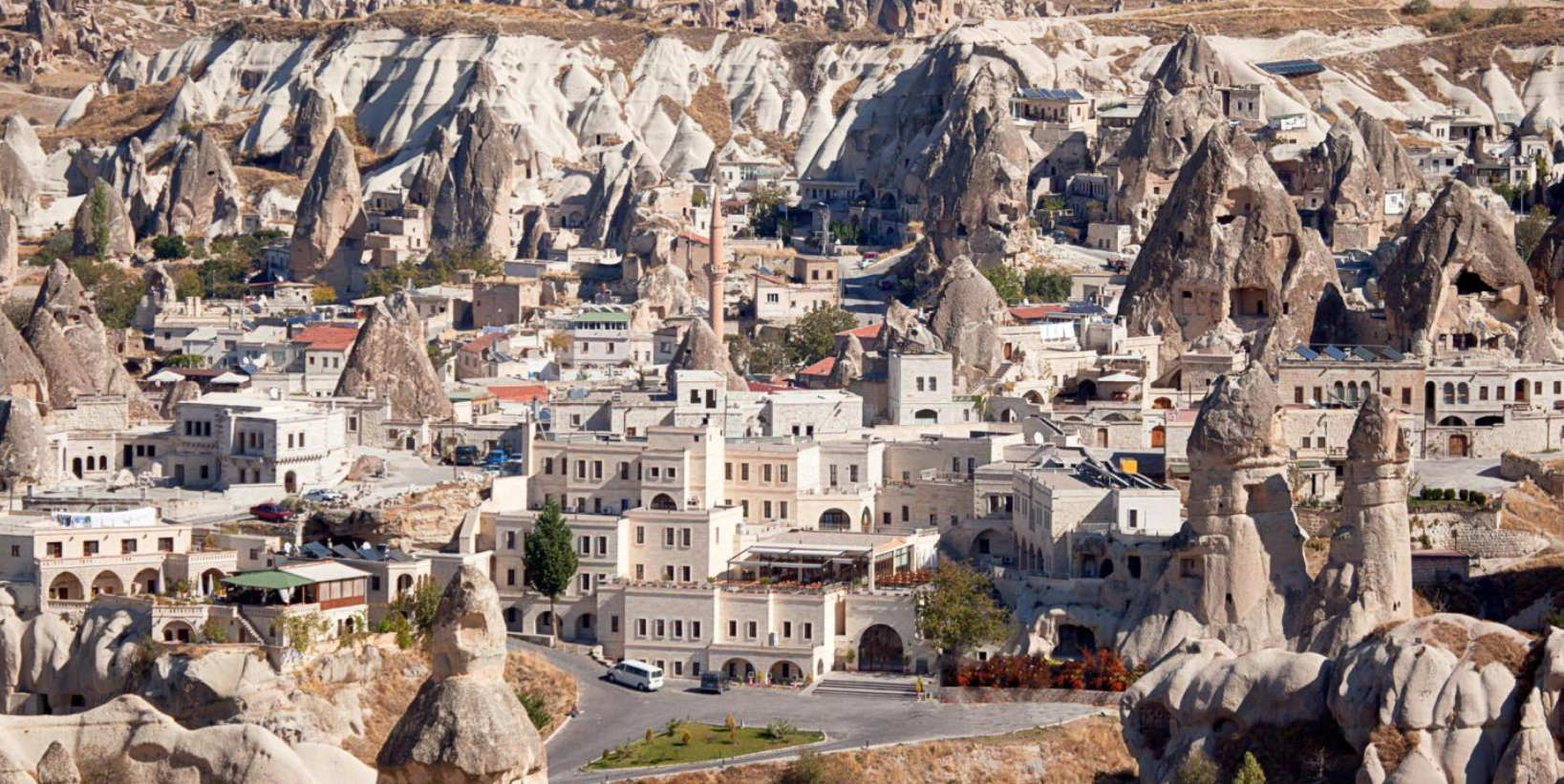
• A paradise for outdoor activities
Sea, mountain, forests and plateaus crossed by many rivers allow the practice of a multitude of outdoor activities: hiking, cruising, windsurfing, catamaran, diving, rafting, sea kayaking, canyoning, horse riding, paragliding, golf and, in winter, skiing and snowshoeing.
Hiking is one of the flagship activities because the country combines nature and history. The 21 natural parks and archaeological sites lend themselves to all adventures whatever the level of walkers. At the head of the easy and exotic hikes: Cappadocia. Around Göreme, there is no lack of trails and in just a few haures you can discover very pretty valleys. Among the hiking trails to recommend, the Pigeon Valley (1h30 walk between Göreme and Uchisar), the Blanche valley (3 hours between Uçhisar and Cavusin), the Ihlara valley (4 km and 2 hours walk between Belisirma and the monastery of Selim) and finally the Valley of the Roses (3 hours walk between çavusin and the church of Saint-Jean de Ayvali). For a trekking or a simple hike, it is advisable to be accompanied by a guide because the trails indicated at the start are not always very well marked and you should know that Cappadocia is a real labyrinth.
Not far from the Aegean coast, Lake Bafa is also a hotspot for hiking. In the middle of green hills, the paths crisscross between ancient ruins and Byzantine monasteries. For sports enthusiasts, the adventure begins with the Lycian way and the Saint-Paul path which cover more than 500 kilometers each! Without going so far as to advise the whole and its 30 days of walking, it is quite possible to do only part of it. These two particularly well marked hiking routes (red and white marks every 100 meters) cross breathtaking landscapes. The Lycian route which begins in Fethiye and ends near Antalya, winds over the sea to sink into the foothills of Mount Tahtali. In the middle of the circuit, between çirali and Ulupinar, a day hike allows you to discover sublime beaches with the mountain in the background. Opened in 2004, the Saint-Paul trail connects the Mediterranean coast to the lakes region. This is the circuit taken by Saint-Paul during his first missionary journey in the 1st century. A 30-day walking route that starts at the seaside resorts to climb to more than 3000 meters in altitude. Considered one of the most prestigious international hiking trails, this trail runs through one of the most beautiful Roman roads in the country.
GOLFIC interest
A golf destination recognized worldwide for the quality and number of courses
Turkey and more precisely the Turquoise coast around Belek / Antalya is essential in Turkey as a must-see place for all lovers of the little white ball. This region is one of the few in Europe (probably the only one) to offer so many routes in such a small area. There are no less than nine courses within a few kilometers of each other. Players have no shortage of choices and can easily switch from one course to another. Mostly designed by renowned architects (Nick Faldo, David Jones, Dave Thomas, Colin Montgomerie ...) all these courses benefit from a demanding layout, of international scope. Expect to show your handicap card at the start of the 18 holes. However, do not panic for beginners who benefit from initiation courts in luxurious hotel facilities. In this enchanting setting lost between pine forests and the foothills of the mountains, learning to golf becomes a real pleasure. The region of Bodrum not very suitable for the practice of golf because of its steep connection nevertheless has a very beautiful course (36 holes), easily accessible only 23 km from the city of Bodrum.
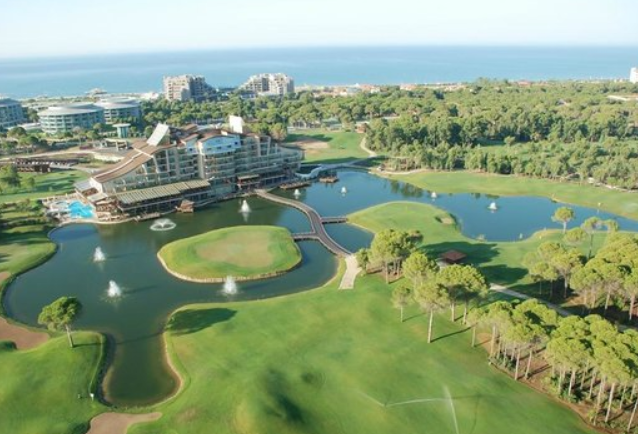
DIVE / SNORKELING interest
The diversity and transparency of the seabed make Turkey one of the most popular countries for lovers of archeology and caving dives. With more than 380 professional clubs and nearly 55 associative clubs with excellent infrastructures, the country is very well placed to offer baptisms and diving courses. Apart from the wrecks listed off Kas (an American B24, an Italian plane sunk in 1944, and a steamboat called 'Duchee of York ") and those of Kemer (three wrecks including the" Paris "sunk in 1917) , there are many archaeological remains to visit provided you are accompanied by a guide or a diving school instructor.It is also strictly forbidden to dive alone in areas indicated by the Ministry of Culture.
BALNEARY interest
With more than 8000 kilometers of coastline, Turkey is a true paradise for seaside holidays and relaxation. The beaches are nevertheless very diverse depending on the region: golden sand, gray, pebbles, long beaches, coves ...
The main seaside resorts of Turkey:
• Izmir
Thanks to its geographical formation, the Izmir coastline made up of several small peninsular bays gives people the opportunity to practice water sports and is also an ideal place for seaside holidays. The most popular beaches in this city are Pamucak, Gumuldur and Ozdere to the south, Urla, Cesme, Ilica, Alacati, and to the north, Dikili, Candarli, Fca, Oren.
• Bodrum
If the ancient Halicarnassus (Bodrum today) has attracted sailors from around the world for ages (Homer had Ulysses embark there for his Odyssey), it is for the incomparable beauty of the landscapes of this part of the Aegean Sea. To the north, the Catal Islands and the narrow pass of Karabakla, where the waters are said to be the clearest in the world. As for the city of Bodrum, it seduces with the charm of its white houses, its balconies full of bougainvillea and its isolated fortress in the middle of the waves. The seaside resort is very often described as the Turkish Saint Tropez. The typical and listed architecture of the city, the human-sized hotel industry - only buildings of less than three floors are built - and the authentic villages in the surroundings make many consider it an intimate alternative to Antalya or Izmir. On the other hand, the beaches are rather rare or present in the form of small coves of pebbles. Most of the time, hotels that do not have a beach have provided access to the sea via pontoons. One of the best ways to experience wild coves is by cruising aboard traditional schooners. Very popular in Bodrum, these ships with round lines have between six and eight cabins and are led by a local crew, sometimes French-speaking, made up of a captain, a cook and a sailor. After installation and a first night on board, in Bodrum marina, the boats set sail for still wild bays and coves where customers can enjoy the turquoise waters. Accommodation on board is simple but functional, with double cabins featuring a small bathroom with WC. Week-long itineraries usually run along the Turkish coast but some tackle neighboring Greek islands including Symi and Rhodes.
• Kusadasi
Kusadasi is one of Turkey's biggest summer resorts. There are beautiful sandy beaches in the center or near Kusadasi. Like the town beach located in the center, the ladies beach not far from the center and the Kustur beach, located 7 km from the center on the road to Selcuk.
• Antalya - Belek - Kemer
Also called "turquoise coast", in homage to its azure waters, it enjoys a mild climate with record sunshine of over 300 days per year. In spring, when the peaks of the Taurus are still covered with snow, you can already swim in the many coves that line the coast. Outside the old town of Antalya, Belek and Kemer are two modern seaside resorts without much charm. The beaches are nevertheless among the most beautiful in the country. With its fine sand beaches, pine and eucalyptus forests and superb natural sites, the region attracts a lot of people in summer. Sports activities are many and varied.
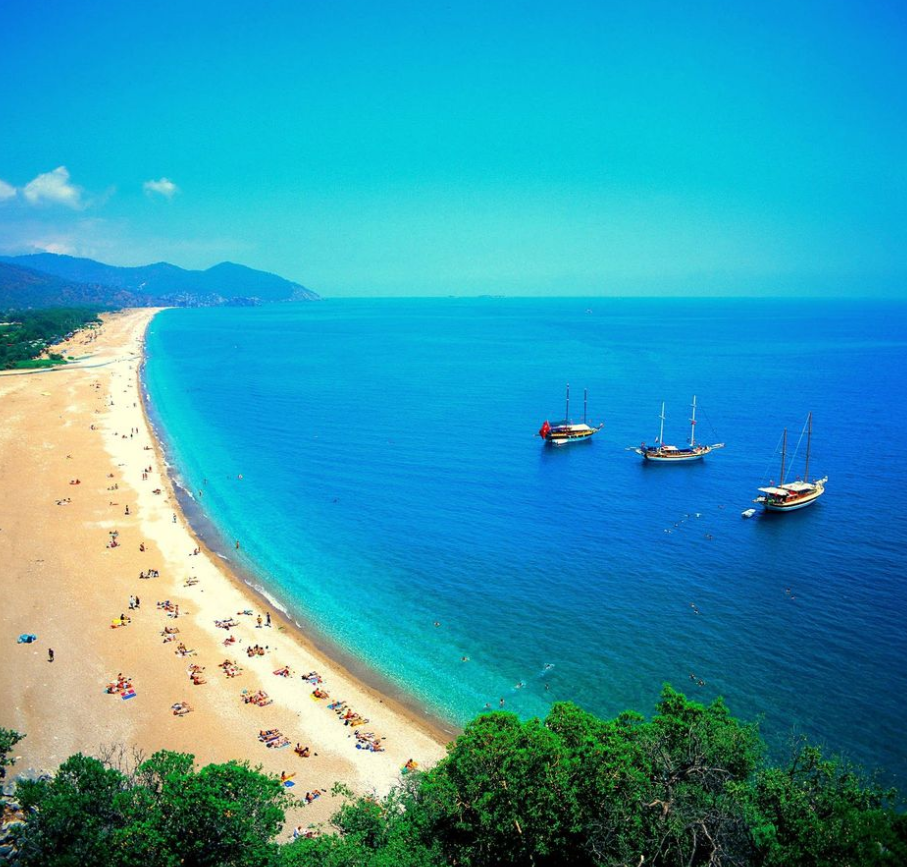
The most beautiful beaches in the country:
• Dalyan: Iztuzu beach (between Bodrum and Antalya)
One of the most beautiful beaches in the world is Iztuzu Beach in Dalyan, which has gained notoriety mainly for its wildlife. The endangered loggerhead sea turtle has chosen the Turkish Aegean Peninsula to breed: the beach is therefore closed at night, even to bathers.
• Fethiye: Ölüdeniz (between Bodrum and Antalya)
Olüdeniz Beach is the number one motif of Turkish postcards. The azure-blue half-moon-shaped lagoon in Fethiye is bordered by mountains and pine forests; we sunbathe on golden yellow sand. The name Ölü Deniz means Dead Sea, and here the surface of the water is really hardly disturbed by the waves.
• The Datça peninsula (opposite Bodrum)
Like a huge finger, the Datça peninsula stretches about 100 km into the Mediterranean, separating it from the Aegean Sea. The most beautiful beaches are to the south, opposite the Mediterranean coast. On this peninsula, there are mainly small resorts such as the "Club Resort Select Maris" perched on a 45 meter cliff above the hotel's private bay.
• Alanya: Cleopatra beach (140 km south of Antalya)
If legend is to be believed, Queen Cleopatra came to Alanya on a trip to the Mediterranean and bathed in the bay of the Turkish Riviera, which is now called Cleopatra Beach. The special feature of this beach: the almost white coral sand and the very clear water - awarded with the Blue Flag eco-label.
• Cesme: Altinkum beach (400 km east of Antalya)
Altinkum beach in Cesme on the Turkish Aegean coast owes its name to its very fine golden sand. Sunbathing and swimming are possible on the main beach and in various romantic little bays. This is the ideal place: thanks to the opening to the sea, a light wind blows continuously.
THALASSO interest
In Turkey, the therapeutic virtues of water and sludge are no longer to be proven. Known since antiquity, the ancient city of Hierapolis today Pamukkale is not only famous for its white limestone concretions but also for its hot buckets saturated with mineral salts. There are more than 1000 thermal springs located all over the country. Apart from the traditional thermal centers generally located in the interior, rare are the hotels on the coast to have a thalassotherapy center.
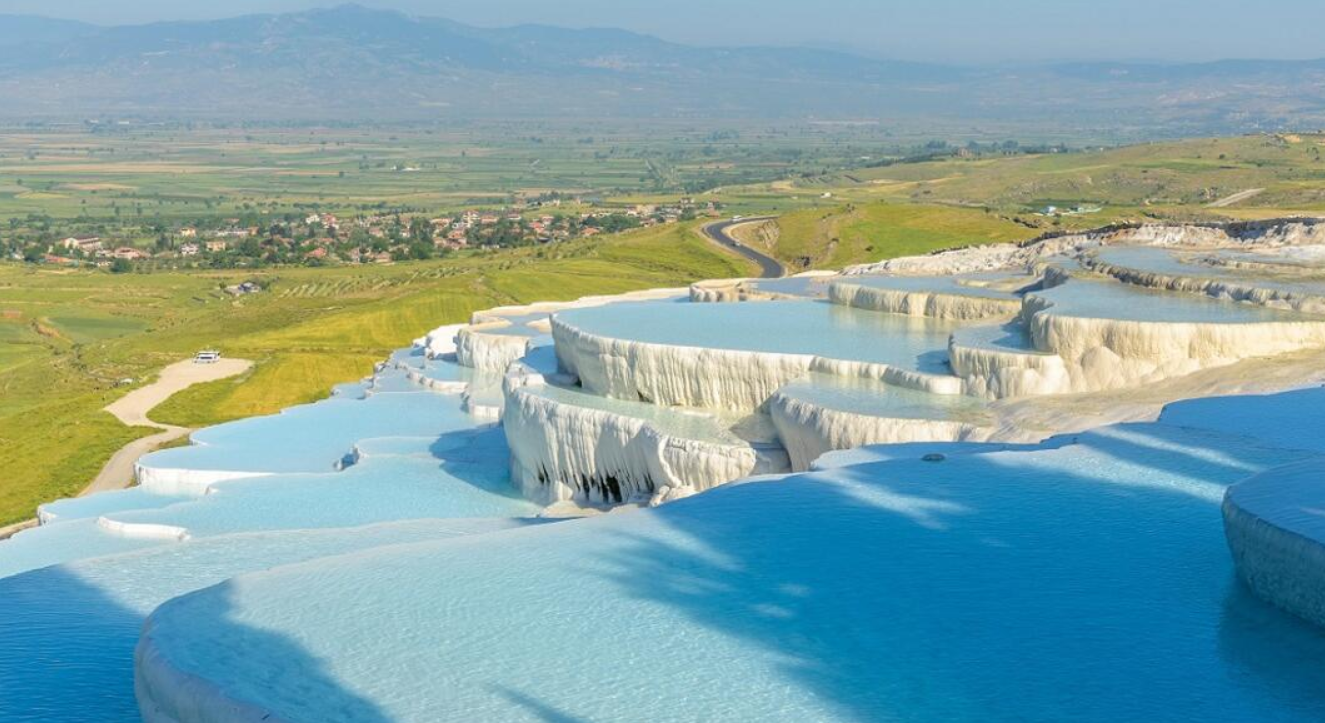
SPA interest
There is a good quality Spa offer thanks to high-end hotels well established in the capital or on the coast. These hotel complexes offer very complete treatments in modern and well-equipped spaces. The large seaside resorts also offer quality centers. On the program: massages with essential oils, body and facial treatments, seaweed wrap, hydrotherapy, not to mention the traditional Turkish bath. It is in fact a hammam followed by a treatment with a horsehair glove and a fairly invigorating massage. A wonderful moment of relaxation that it would be a shame to ignore, especially in such luxurious places.
Strengths of the destination:
- The immense historical and cultural heritage
- An extremely diverse nature (mountains, plateaus, valleys, forests, desert, lakes, rivers ...)
- Diversity of activities (nautical, fishing, rafting, canyoning, caving, hiking, mountain biking, horse riding, mountaineering, climbing, hunting ...)
- The kindness and hospitality of the Turks
- Turkish cuisine, fresh, delicious, varied .. even in first class hotels
- A varied leisure hotels of excellent quality of service considered to be the best in Europe
- A leading golf destination
- The beauty and diversity of the beaches
- A safe destination
At your request, we can take care of all the procedures relating to reservations (hotel, car, etc.), transfers (airport-hotel) and other additional services depending on the type of stay chosen.
For more information or reservation please contact us by mail or whatsaap
- Antalya, Turkey
 +90-5385823609 - ENG -TR - FR
+90-5385823609 - ENG -TR - FR +90-5435384606 - NL / FL - DE - ENG
+90-5435384606 - NL / FL - DE - ENG- medical.travel.turkey@hotmail.com

